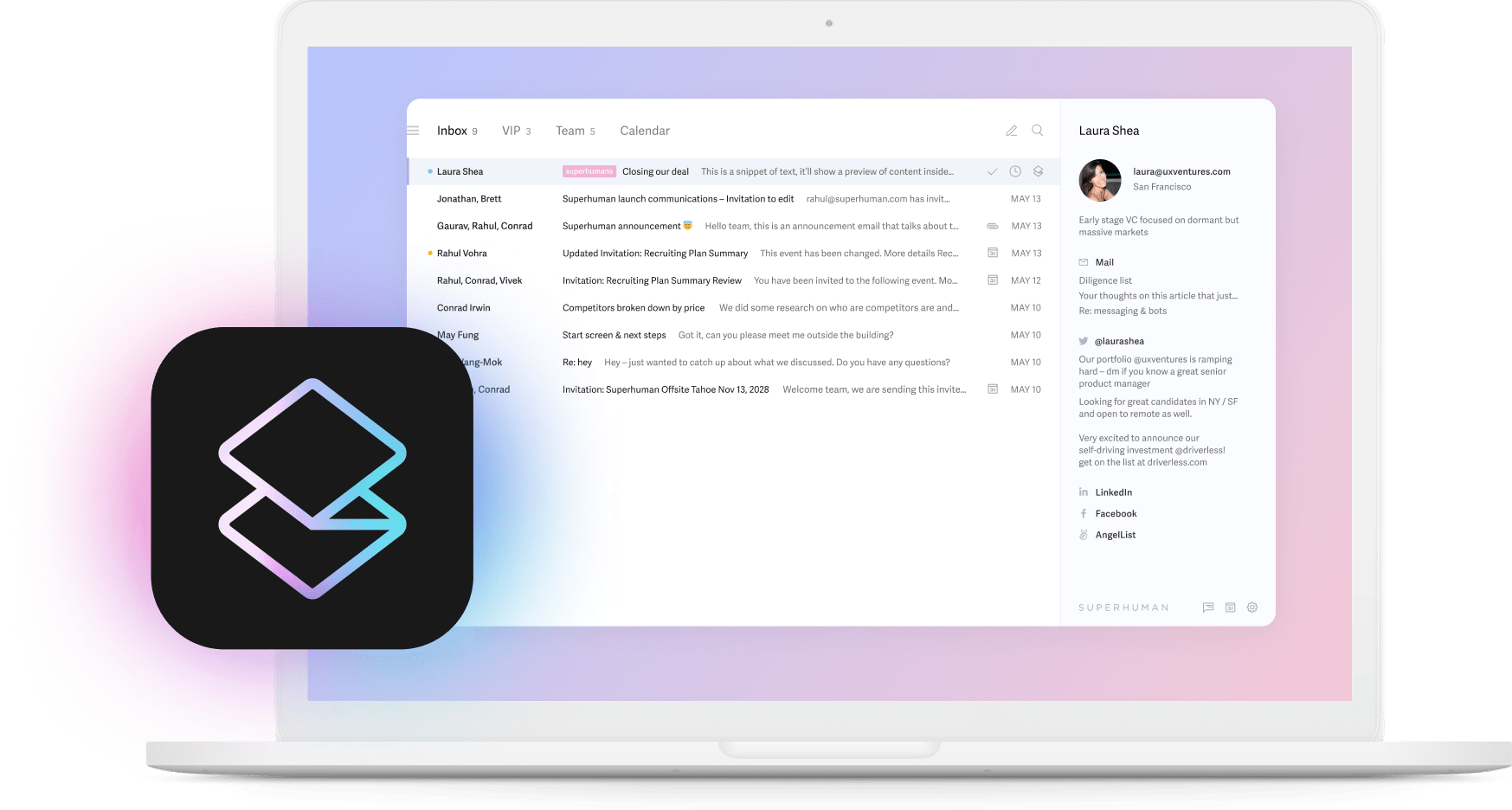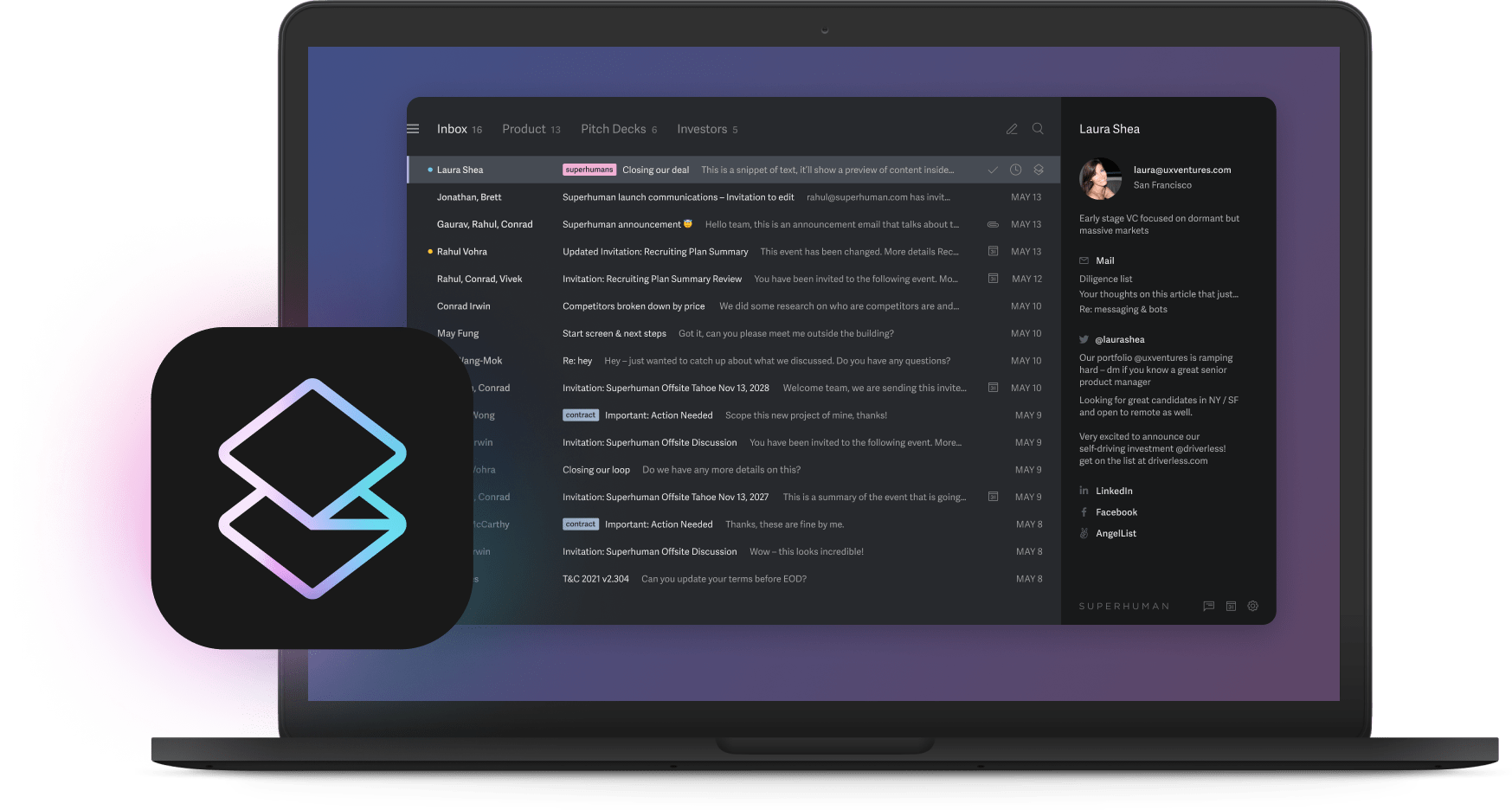
Take any startup that's doing well. They hire their first customer success person. Great, right? Now that person needs to coordinate with sales. And product. And engineering. Suddenly, you've got four people spending an hour a day just figuring out who should do what.
Add more customers, and the problem multiplies. Every new hire creates more coordination overhead. Every partnership means more meetings. Every product launch requires more alignment.
Most founders see this happening and hire coordinators. Or they add process layers. This makes everything worse. Now you've got people whose job is coordinating the coordinators.
But here's what we figured out. AI workflow automation can break this pattern completely. You can grow without drowning in coordination chaos.
The best way to see this is to build one yourself.
Automate your first workflow in 30 minutes
Let's build something that solves a real problem: your customer support team drowning in email. We'll automatically route customer questions into your #customersupport Slack channel with AI-generated summaries and priority flags.
Here's what happens: A customer emails support@yourcompany.com about a billing issue. Within 30 seconds, your team sees a Slack message: "⚠️ URGENT: Sarah Chen (Premium customer) - billing error blocking access, needs immediate help."
Your team can respond instantly instead of digging through email.
Try SuperhumanWhat you need to start
Three things:
- Zapier account (free version works)
- OpenAI API key with $5 credit
- Your support email inbox (support@yourcompany.com)
That's it. No complicated setup or expensive tools.
Build it in 5 steps
Step 1: Set up the email trigger
Open Zapier and connect your Gmail or Outlook support inbox. Pick "New Email" as your trigger. Add a filter for emails sent to "support@yourcompany.com" so you only process actual support requests, not spam.
Step 2: Add AI analysis and summarization
Connect OpenAI and give it this specific job: "Read this customer support email and provide: 1) A 2-sentence summary of the problem, 2) Priority level (urgent/normal/low), 3) Customer type if mentioned (new, existing, premium). Format: [PRIORITY] Customer Name - brief problem description."
Step 3: Route to Slack with priority indicators
Add Slack as your output. Send messages to the #customersupport channel. Use emoji prefixes: ⚠️ for urgent (account blocked, billing errors), 📧 for normal (general questions), and 📝 for low priority (feature requests, feedback).
Step 4: Add smart customer detection
Create filters that check for priority keywords. If the email contains "can't access," "billing error," "account suspended," or "not working," automatically mark it as urgent. If it contains "how do I," "when will," or "feature request," mark it as normal or low priority.
Step 5: Test with real scenarios
Send test emails to your support address: "I can't log into my account and need help urgently," and "When will you add dark mode?" Watch them appear in Slack with correct priority flags and summaries. Adjust the AI prompts until the summaries are helpful and accurate.
Result: Your support team sees "⚠️ URGENT: John Smith - can't access account, login failing" instead of having to open and read full emails. They can prioritize and respond immediately.
Find your best automation opportunities
Before you automate everything, figure out what's worth automating. Look for work that happens repeatedly and follows predictable patterns.
Focus on tasks like these:
- Sorting emails by who sent them or how urgent they are
- Copying information from one system to another
- Sending the same updates to multiple people
- Going back and forth to schedule meetings
Grab these workflow templates and spend 30 minutes writing down what your team does over and over. Most teams find 15-20 automation opportunities right away. A simple rule of thumb is scoring each one on two things: how much time it takes and how hard it would be to automate. Not all automation ideas are worth pursuing.
Go after high-impact, low-complexity wins first. These prove the concept and build momentum before you tackle harder problems.
Running a startup? Focus on anything that touches customers. Work that leads to revenue should take priority every time.
Here's where most people go wrong. They try to replace human thinking with AI. That usually backfires.
Better approach: use AI to make human decisions faster and smarter.
Think of AI as your research assistant, not your replacement. Here's how this works in practice.
AI gathers context, humans decide
Instead of having AI automatically respond to customer complaints, have it read the complaint, check the customer's history, and present you with: "This customer bought $2,000 worth of products last month, this is their first complaint, similar issues were resolved with a 20% discount." Now you can make a smart decision in 30 seconds instead of 10 minutes.
AI suggests, humans approve
Rather than letting AI automatically schedule meetings, have it suggest three optimal time slots based on everyone's calendars, then you pick the best one. AI handles the calendar math, you handle the human considerations like "Sarah works better in the afternoon."
Confidence thresholds create decision points
Set up workflows where AI only acts automatically when it's very confident. If AI is 95% sure an email is spam, auto-delete it. If it's only 70% sure an expense report is valid, send it to a human for review. You get speed for obvious cases and human judgment for tricky ones.
AI fills in the blanks, humans verify
Have AI draft emails by reading previous conversations and pulling in relevant details, but always let humans edit before sending. AI might write "Hi John, following up on our Tuesday discussion about the Q4 budget," but you add the human touch about his kid's graduation.
Try SuperhumanWhere AI still struggles
AI can't read between the lines in office politics. It doesn't know that your biggest client hates being contacted on Fridays. It can't sense that this particular vendor relationship needs delicate handling. That's where human insight becomes essential.
The goal isn't to remove humans from the loop. The goal is to remove the tedious research and data gathering so humans can focus on relationship decisions, strategic choices, and nuanced judgment calls.
Don't get distracted by fancy AI features. Pick tools based on what you need:
- Text analysis for reading and understanding content
- Classification for sorting and routing decisions
- Content generation for writing summaries and responses
Simple tools that work reliably beat complex tools that work sometimes.
Choose your automation platform
Your choice depends on how technical your team is and what systems you need to connect.
No-code vs custom solutions
No-code platforms like Power Automate, Zapier, and Make work great for connecting popular business apps. They're fast to set up and don't require programming.
Custom platforms like Dify, FastGPT, and SmythOS give you more control for complex workflows. Pick these when you need custom AI models or unusual integrations.
Our take: if you're non-technical, start with no-code. You can test ideas quickly. If you have technical people, consider custom solutions for more flexibility later.
Handle security properly
Working with enterprise clients or in finance? Compliance isn't optional. Make sure your platform meets SOC 2, GDPR, and HIPAA requirements before you build anything.
Set clear rules about:
- What data can be processed automatically
- How long does information get stored
- Who can access and change workflows
- What records do you need for audits
Build and test like you mean it
Don't just build and hope it works. Test everything before you depend on it.
Create a testing environment that mirrors your real setup but doesn't affect live data:
- Use test accounts for all integrations
- Create sample data covering different scenarios
- Set up monitoring to track performance
- Document what success and failure look like
For email workflows, use dedicated test accounts. You never want to send test messages to real customers by accident.
Log the important things: what went in, what came out, how long it took. Most problems show up in logs before anyone complains.
Try SuperhumanDeploy smart and keep improving
Start conservatively and expand as you build confidence. Monitor performance and optimize based on real usage.
Focus on metrics that matter:
- Speed from start to finish
- Accuracy (95% success rate is a good standard)
- Error rate broken down by type
Set up alerts when performance drops. Most problems show up in metrics before customers notice.
Set regular check-ins:
- Weekly reviews to catch problems early
- Monthly sessions to tune performance
- Quarterly reviews to plan expansion
Teams that keep improving see a boost in efficiency gains over a couple of months. The initial setup is just the beginning.
Avoid the obvious mistakes
Most automation projects fail for predictable reasons. Here are the specific mistakes you'll encounter and exactly how to prevent them.
Rate limiting stops workflows
APIs have limits, and you'll hit them. Gmail allows 250 requests per user per second. Slack limits you to 1 request per second for posting messages. When you exceed these, your automation stops dead.
Prevention: Add delays between requests. In Zapier, use the "Delay" action between steps. For high-volume workflows, implement queuing where requests wait in line instead of all firing at once. Monitor your usage through API dashboards.
Authentication tokens expire
Your automation works perfectly for weeks, then suddenly breaks. The culprit? Expired authentication tokens. Most OAuth tokens last 1-3 months before requiring renewal.
Prevention: Set calendar reminders to refresh tokens before they expire. Use platforms like Zapier that handle token renewal automatically. For custom integrations, build token refresh logic into your workflows.
Input format changes break everything
Your workflow expects "John Smith" but suddenly receives "Smith, John" from a form. Or a date arrives as "MM/DD/YYYY" instead of "YYYY-MM-DD". Your automation crashes because it can't process the unexpected format.
Prevention: Build validation steps that check data formats before processing. Create "data cleaning" steps that standardize formats. For dates, convert everything to ISO format (YYYY-MM-DD) immediately. For names, decide on "First Last" or "Last, First" and stick to it.
Services go down without warning
Slack has an outage. Your CRM decides to update its API. Suddenly, your critical workflows stop working, and you don't know why.
Prevention: Subscribe to status pages for every service you integrate (slack.status.io, status.openai.com). Set up monitoring that pings your workflows every 15 minutes. Create backup workflows using alternative services for critical processes.
Error handling doesn't exist
When something goes wrong, your workflow just stops. No notification, no retry, no fallback. You discover the problem days later when someone asks, "Did you get my email?"
Prevention: Add error handling to every step. In Zapier, use "Filter" actions to catch errors and send notifications. Set up Slack alerts when workflows fail. For critical processes, build retry logic that attempts failed steps 2-3 times.
Testing only happy paths
You test your workflow with perfect data and normal scenarios. But real life includes typos, missing fields, special characters, and edge cases you never considered.
Prevention: Test with messy data deliberately. Send emails with emoji subjects. Submit forms with missing required fields. Include special characters (& % @ #) in your test data. Try maximum-length inputs that might break character limits.
API costs spiral out of control
Your OpenAI bill jumps from $20 to $500 because you're using GPT-4 for simple tasks that GPT-3.5 could handle. You're calling expensive AI analysis for routine data processing.
Prevention: Use the cheapest tool that works. Simple text classification (urgent/not urgent) doesn't need GPT-4. Set spending alerts at $50, $100, and $200. Review API usage monthly and optimize expensive operations.
Workflows become too complex
You build a single workflow that handles 15 different scenarios with nested conditions. When it breaks, nobody can figure out why or how to fix it.
Prevention: Keep workflows simple and single-purpose. One workflow should do one thing well. If you need complexity, chain simple workflows together. Document what each workflow does in plain English.
Scale across your whole organization
The best automation programs expand systematically. Start with clear wins before rolling out everywhere.
Here's simple math for calculating return: (Time Saved × Hourly Rate × Frequency) - (Platform Costs + Setup Time). Do the math for your specific situation to see if it makes sense.
Example: You automate email sorting that currently takes 30 minutes daily.
At a $50 hourly rate, working 20 days monthly, that's 10 hours × $50 = $500 in saved time monthly.
Subtract $30 platform costs and $200 in setup time (4 hours × $50).
First month return: $500 - $30 - $200 = $280. Every month after: $470 in value.
Rollout strategy that works:
- Phase 1 (Weeks 1-4): One team, one visible workflow
- Phase 2 (Weeks 5-12): Whole department, 3-5 workflows
- Phase 3 (Weeks 13+): Cross-functional, standardized processes
Get buy-in by showing real improvements. Communication automation creates a competitive advantage through faster decisions and better customer responsiveness.
Teams using AI tools like Superhuman save 4 hours per person weekly and respond 12 hours faster to important emails. Combined with workflow automation, these improvements multiply across your whole organization.
Try SuperhumanMost companies try to solve coordination problems by hiring more people to coordinate. But coordination itself is the problem. The smartest teams automate coordination instead.
Start with the 30-minute tutorial above. Grab the workflow templates. Turn your communication from reactive scramble into a strategic advantage.
We think this might be one of those rare cases where the solution is simpler than the problem. Growing companies don't need more coordination. They need better coordination. And that's exactly what AI workflow automation provides.






